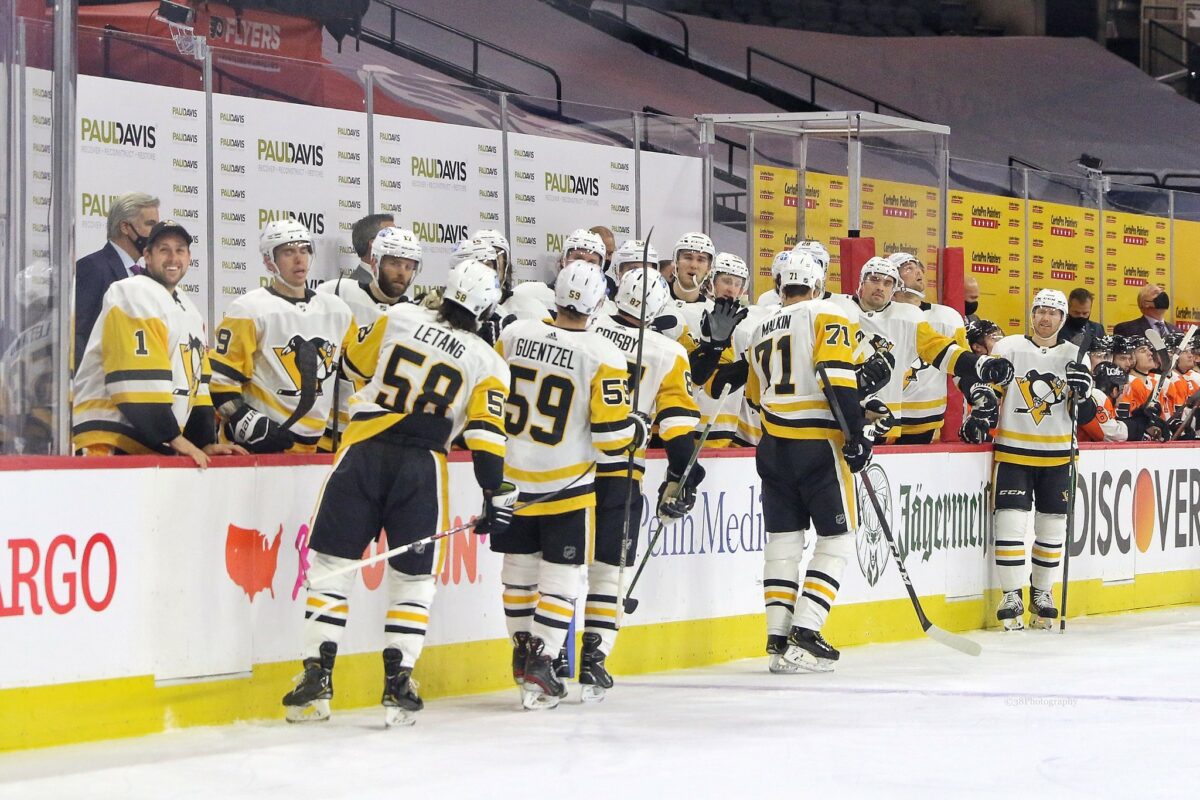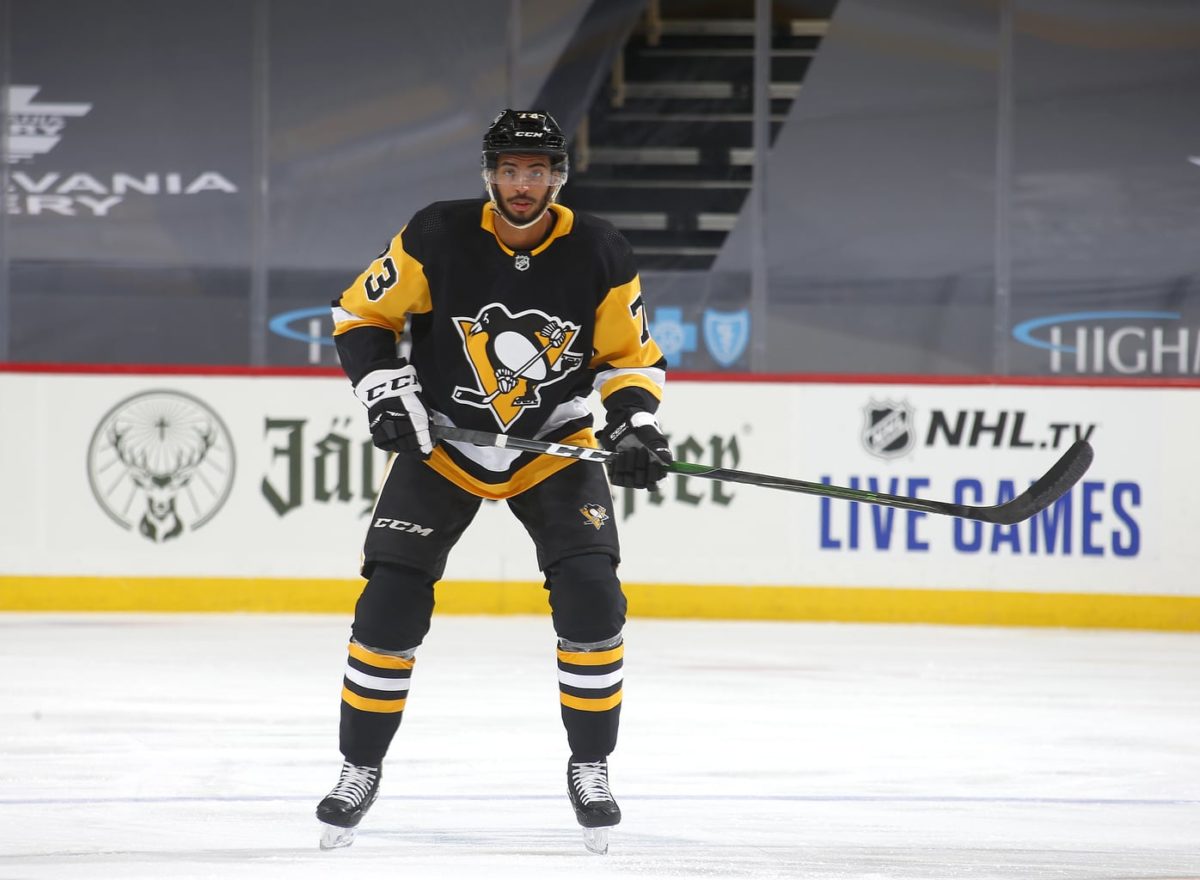The dawn of a new NHL season is a time for renewal. The hockey universe resumes a familiar voyage through countless ham-fisted memes, inflammatory soundbites, and the highly-anticipated finale of a playoff catastrophe starring the Toronto Maple Leafs. Even within a confines of a well-versed routine, the 2021-22 season is a daunting one for the Pittsburgh Penguins, as the franchise faces a vast range of outcomes which correlate to the health of their stars and the competence of their replacements. Now, here are three bold predictions to promptly forget by the holidays.
Prediction Number One: Pittsburgh Misses the Playoffs
Your feelings towards Pittsburgh’s forward depth beyond its pair of superstar centers, both of whom are scheduled to miss significant time to start the season, dictates your reaction to this first prediction. I recently wrote an article which controversially endorses trading Sidney Crosby, and outlines how the Penguins’ could conceivably miss the playoffs. The collective strain from waning output and inconsistent health from their core, a roster dehydrated by a barren prospect pipeline, and the haunting burden of consecutive playoff failures could spell disaster for the organization in 2021-22.
If the considerable impact of Crosby and Evgeni Malkin’s uncertain health is not a persuasive enough argument, the NHL’s playoff structure means that several otherwise playoff-caliber squads will exist within hockey’s version of purgatory – not good enough to qualify for the postseason, but too talented to split rent with the Buffalo Sabres in the league’s basement. The balance of power in the NHL has shifted to the Eastern Conference, leaving playoff hopefuls looking to sneak in through one of two wildcard spots with little margin for error.
Related: Pittsburgh Penguins 2021-22 Season Preview Collection
In the Atlantic, three of Tampa Bay, Boston, Florida, and Toronto will likely earn the automatic divisional spots, leaving an extremely skilled squad to tangle with the Metropolitan outcasts for the final two playoff berths. None of the quartet will have to survive injuries to their franchise cornerstones, giving them the edge in navigating the early portion of the season schedule. Montreal and Ottawa are nuisances which stubbornly refuse to surrender, which means it’s foolish to assume that those games will be an easy two points in the bank even with the relative youthfulness of their rosters.
In the Metro, the New York Islanders are coming off of consecutive trips to the Conference Finals, and can count on a full season of Kyle Palmieri’s scoring chops. The New Jersey Devils added one of the NHL’s most dynamic defenseman in Dougie Hamilton and anticipate significant developmental progress from their young forwards. The New York Rangers narrowly missed out on the 2021 postseason, and are hoping for similar breakout campaigns from their host of highly-touted prospects. The Philadelphia Flyers are betting on Carter Hart bouncing back from an atrocious 2020-21 campaign and revert to the form which had pundits penciling him into Canada’s team for the Beijing Olympics this time last year. Despite shedding talent in the offseason, the Washington Capitals and the Carolina Hurricanes remain challenging matchups. Even in the best of times, that’s a rough division.

Even with a COVID-ravaged NHL calendar and related divisional shakeup, last season’s results can offer a glimpse into what is required to clinch a playoff spot. In the Central (Dallas Stars) and Metropolitan (Rangers) divisions, an 87-point-pace fell short of earning a place in the postseason. The Penguins won their division last season, and clearly possess enough talent to mingle with the NHL’s elite when healthy, but there lies the issue – they’re not. Although Crosby should return soon enough, Malkin will miss several months of the season. Can the team survive with an aging Jeff Carter as it’s top (but eventually third) center? As I noted, their division promises to be an unforgiving gauntlet where any dropped points quickly accumulate to form a nearly insurmountable barrier.
Things look bleak, but all hope is not lost. Remember, the NHL heads back to a complete 82-game season, and the St. Louis Blues demonstrated just two years ago that early struggles do not define an entire season. If the Penguins can tread water until their twin pillars return, they can ride that wave of momentum into a playoff spot. If not, it could be an agonizing winter in Pittsburgh. At least Shane Wright looks elite, though.
Prediction Number Two: Radim Zohorna Scores 20 Goals
I toyed with a safer (and more realistic) prediction of 15 goals, but where’s the fun in restraint? Radim Zohorna’s production in a brief stint with the Penguins last season elevates him to the status of unlikely cult-hero – a strange figure who emerges to provide an injection of desperately needed support, and rescues the team from certain demise.
Zohorna isn’t a traditional rookie as he made his debut in the Czech Republic’s top hockey league as an 18-year-old, which gives him a leg up in attempting to acclimate to the NHL style of play. In fact, he scored 44 points in 67 games in his final two seasons before moving to North America. The organization recruited Zohorna as a free agent, after which he promptly scored 11 points in 12 American Hockey League (AHL) games upon his arrival, earning a late-season call-up. Despite averaging only nine minutes a night, he scored four points in eight games and endeared himself to the Penguins’ faithful with his mouthwatering blend of size and poise around the net. Just take a look at this riveting tally from last season.
A slight uptick in ice time, as well as more favourable deployment alongside Pittsburgh’s established forwards, could easily boost Zohorna’s production. In an extremely limited NHL-sample (64 minutes at five-on-five), the 6-foot-6 behemoth ranked third among NHL forwards in goals per-60-minutes, 14th in points per-60, 240th in shots per-60, and 193rd in individual expected goals per-60 (the quality of shots generated by a player). While his mind-boggling level of production is not repeatable in the long-term (like scoring on a quarter of his shots), there’s a legitimate offensive contributor bubbling underneath the surface.
The extended absence of the team’s offensive generals demands that an unlikely candidate hitches the team’s success to his proverbial wagon, and fearlessly ventures into unexplored terrain. Judging by Pittsburgh’s fruitful history of mining unknown commodities and refining them into reliable contributors (Jake Guentzel and Brian Rust spring to mind), Zohorna tests well as the newest model. Seriously, it’s approaching parody territory at this point, so it’s not inconceivable for head coach Mike Sullivan to uncover another diamond in the rough. If he avoids starting the season in the AHL, watch out.
Prediction Number Three: Pierre-Olivier Joseph Overtakes Kris Letang
To be frank, Joseph deserves a bigger role on the blue line. His 2020-21 season, split between Pittsburgh and their AHL-affiliate in the Wilkes-Barre/Scranton Penguins, presents the case for a viable attacking option from defense to supplant a franchise legend in Kris Letang.
When applying a threshold of 100 NHL minutes at five-on-five, Joseph created 0.73 primary assists per-60-minutes, which was enough to top established offensive blueliners such as Cale Makar, John Carlson, and his teammate Letang. It’s a very small sample size, but Joseph is not relying on secondary assists to inflate his point totals. He is clearly capable of reading and deconstructing NHL defensive schemes, but requires more reps higher in the lineup to be comfortable in maintaining such a high level of play.
His vision and cunning playmaking ability also translates well to the man-advantage. In tallying seven power-play assists, Joseph tied for ninth among all AHL defensemen in fewer games than his peers on the leaderboard. With more talented scoring options surrounding him, the Laval-native could see his production explode, although Letang still retains his spot on the top power-play unit at this moment in time.

Joseph leverages the threat of his pinpoint passing to create clear shooting lanes for himself, and rarely passes up an opportunity to unleash his sizeable shot. Using the same 100-minute threshold, the rookie defenseman ranked 30th for shots per-60-minutes at even-strength, according to Natural Stat Trick. Operating as a dual threat is the key to consistent production as NHL defenders are too clever to be beaten by those with a solitary tool in their arsenal. On a roster that still features seven players who scored at a 19-goal-pace last season, Joseph’s gifts could facilitate even more offense.
However, Kris Letang‘s sustained excellence threatens this far-fetched prophecy, as the defensive anchor of Pittsburgh’s three Stanley Cups in the 21st century still coherently choreographs the Penguins’ attack. The highest scoring defenseman in franchise history regularly maintains a 50-point pace (every season since 2013-14), and has only missed nine total games in the past two seasons after losing an average of 20 games per season from 2016 to 2019. In any case, Joseph’s presence doesn’t necessarily mandate that he relinquish the keys to Pittsburgh’s offensive machine just yet, even as Letang lacks a contract extension for next season.
If Letang’s history of spotty health resurfaces, the likelihood that Joseph leaps upon the coveted vacancy skyrockets, and management waits with bated breath for him to deliver on his increasingly evident offensive tools. The path to a breakout season for the young blue-liner is littered with obstacles, but not completely inaccessible.
The Penguins Battle Extinction
When a franchise embarks upon a season with Jeff Carter as its first-line center, a year defined by struggle inevitably approaches. However, all is not lost. The unavailability of figures on whom the Penguins’ have relied upon so heavily across parts of three decades challenges unheralded players to cement their place in the NHL. Change demands personal growth, and much of Pittsburgh’s supporting cast may reach unforeseen levels of production strictly out of necessity. If my predictions are correct, I’ll gladly boast of my skills of prognostication. If not, they are to be cast aside, forgotten casualties of the natural passage of time.